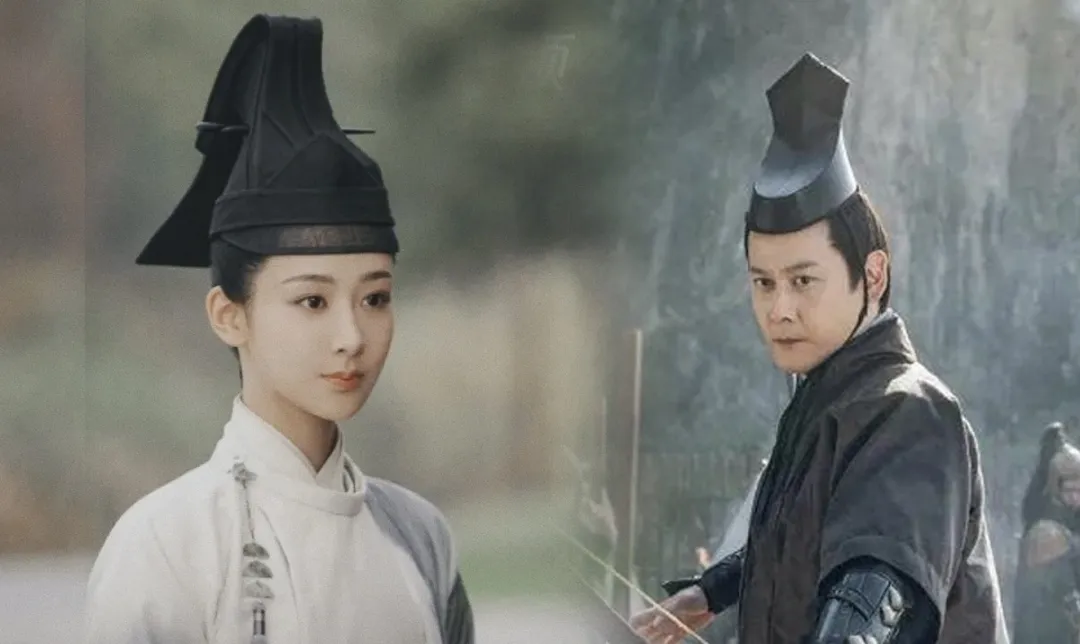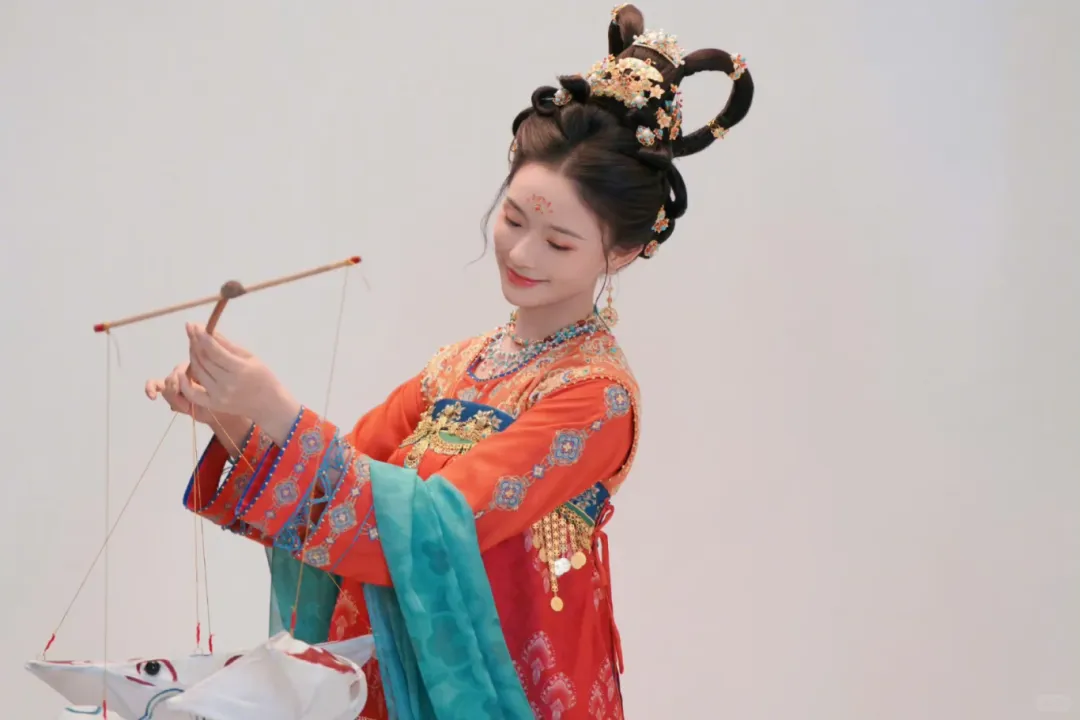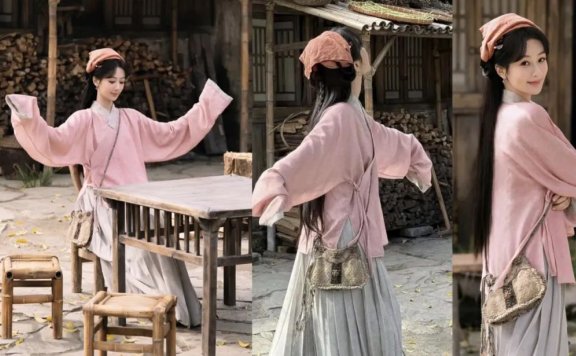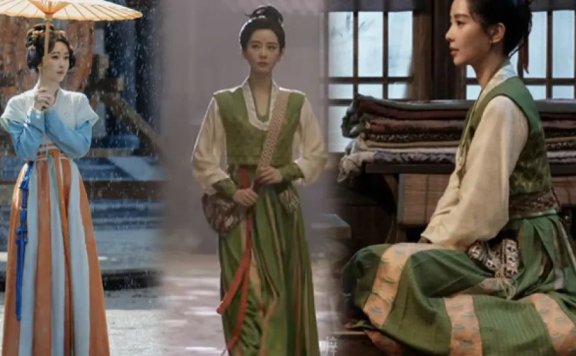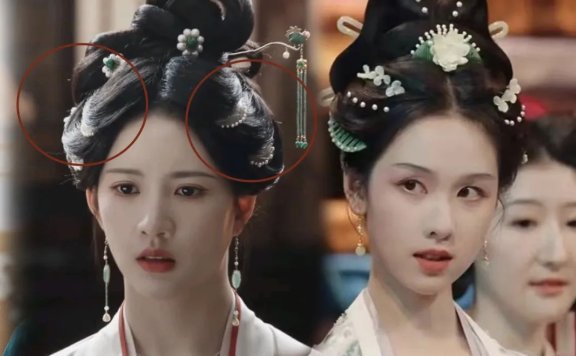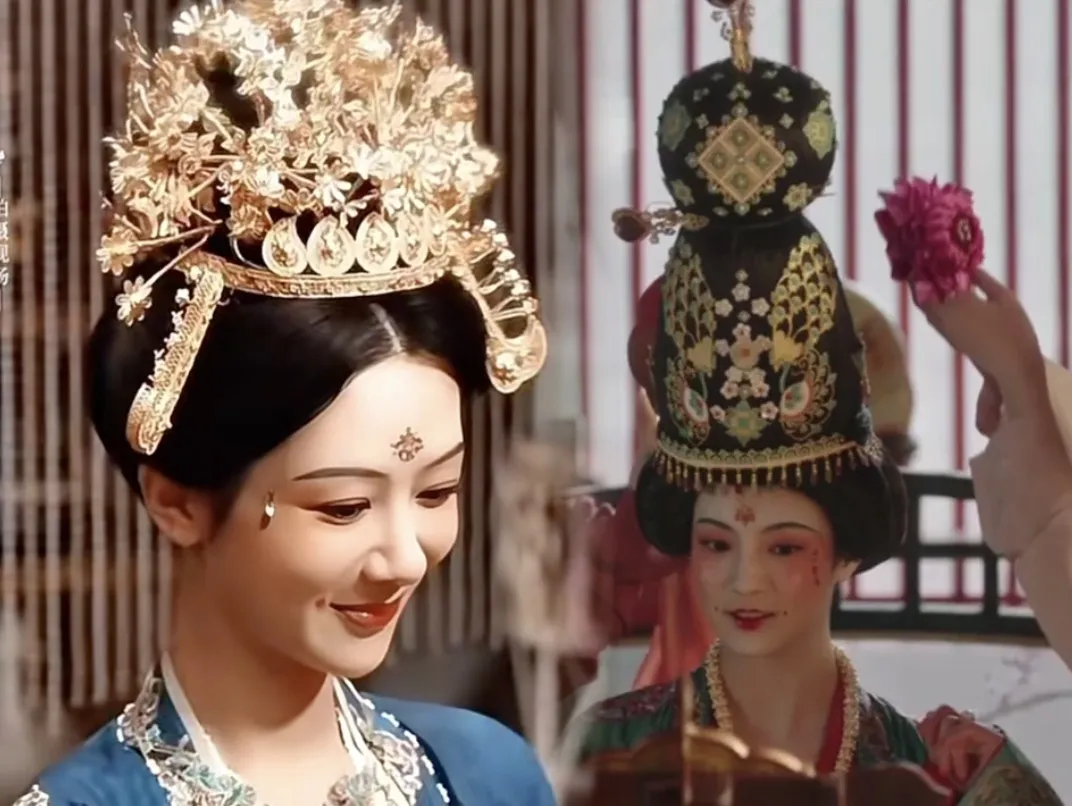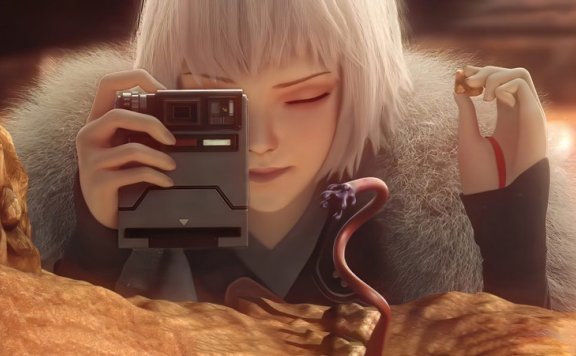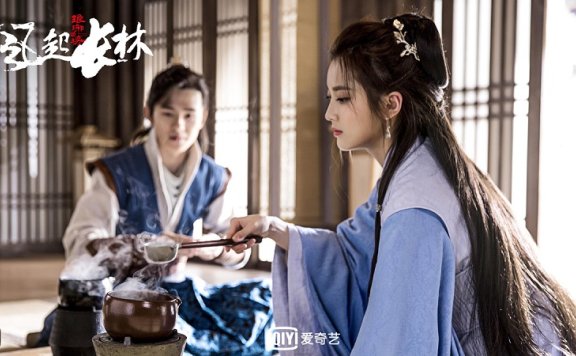Article
搜索结果:
-
Yang Zi's New Drama Sparks Debate Over Japanese-Inspired Costumes
Yang Zi's upcoming drama, originally titled The Golden Hairpin, has once again found itself at the center of controversy. Following the earlier uproar over digital face replacements, viewers are now questioning the authenticity of the costumes, particularly the hats, which many argue bear a striking resemblance to traditional Japanese designs. While it's true that Japanese culture borrowed heavily from the Tang Dynasty, the current designs appear to be simplified versions of later Japanese styles rather than faithful recreations of Tang-era attire. The drama is based on a novel set during the reign of Emperor Yizong of Tang, yet the costumes seem to deviate significantly from historical accuracy. Historical Context of the Hats The Ying Guan (缨冠), a type of hat featured in the drama, is a blend of Han Dynasty's Tongtian Guan (通天冠) and Tang Dynasty's Futou (幞头). The most distinctive feature of the Ying Guan is its flat front and a hanging tassel at the back, which could be either curled (for military officials) or straight (for civil officials). Another hat, the Wu Maozi (乌帽子), is said to have originated during Japan's Heian period. The height of the Wu Maozi indicated the wearer's social status, with taller versions reserved… -
Lin Yun: The Most Fairy-like Ancient Hairstyle Revealed
The Evolution of Shuang Huan Wangxian Ji The hairstyle, known as Shuang Huan Wangxian Ji (双鬟望仙髻), has been hailed as the most iconic and popular fairy-like hairstyle, transcending age and time. Originating from the Shuang Huan Ji (双环髻), this hairstyle was initially designed for young girls. However, its ethereal beauty made it a frequent feature in divine paintings, such as the renowned Luoshen Fu Tu (洛神赋图) and the Eighty-Seven Immortals Scroll (八十七神仙卷). Over time, it evolved into a cultural phenomenon. During the Wei, Jin, and Southern and Northern Dynasties (魏晋南北朝), the high bun with double rings was prevalent. By the early Tang Dynasty (初唐), the Shuang Huan Wangxian Ji began to take shape, characterized by its round and full appearance. The hairstyle ranged from modest daily buns to exaggeratedly large ones, sometimes even matching the length of a face. By the mid-to-late Tang Dynasty (中晚唐), the contours of the hairstyle became wavy, adding a dynamic charm to its otherwise simple form. Popularity Across Dynasties In the Song Dynasty (宋代), this hairstyle became a fashion trend among commoners. Women adorned it with pearl accessories and simplified its originally exaggerated height, making it more wearable for daily life. However, by the Ming… -
Yang Zi's Hanfu Outfits for Lantern Festival
Yang Zi, the renowned Chinese actress, recently shared her Hanfu photos to celebrate the Lantern Festival, sparking widespread admiration online. Fans particularly praised the outfits for their everyday wearability. The Ming Dynasty-Inspired Hanfu Yang Zi showcased two distinct Aoqun (袄裙) styles, a common attire for women during the Ming Dynasty. The first was a pink cross-collar top paired with a gray pleated skirt, while the second featured a green front-closing top with subtle red accents for a contrasting effect. Both looks highlighted the elegance and versatility of Ming-era fashion. Historical Color Palettes The pink and gray combination reflects a timeless aesthetic, popular even during the Tang and Song dynasties. Notably, the Yangfei (杨妃色), a delicate pink hue derived from mineral pigments, adds a touch of historical charm. Similarly, soft greens and watery blues were favored for their understated sophistication. Modern Adaptations For a more formal occasion, Yang Zi’s standing-collar long coat with a Mamian skirt (马面裙) exemplifies Ming-era grandeur. However, the gray-toned ensemble proves that Hanfu can be adapted for daily wear with muted colors and thoughtful accessories. Styling Tips Traditional Hanfu often employs the 'clothing-over-skirt' technique, which, though less slimming than the reverse, offers a flattering fit for various… -
Ancient Striped Dresses in Tang Dynasty
In historical dramas like Kill My Sins, we often see actresses like Liu Shishi (刘诗诗) wearing striped dresses that resemble modern fashion. But did such striped dresses really exist in ancient times? Was the Tang Dynasty that ahead of its time? The answer is yes. These narrow-striped dresses were popular from the early Tang Dynasty to the Wu Zhou period, with origins tracing back to the Han and Jin dynasties. Interestingly, these stripes weren’t printed but were meticulously sewn together. This visual technique to elongate the figure wasn’t a modern invention—our ancestors had already mastered it for a sleek, fashionable look. Their aesthetic was truly scientifically slimming. The Art of Poqun (破裙) Poqun doesn’t mean torn dresses but refers to paneled skirts made by stitching separate fabric pieces. These skirts, dating back to the Han and Jin dynasties, were discovered in the Bijiatan Tomb. They could be pleated or layered, showcasing remarkable flexibility in design. Color Combinations Poqun featured both monochromatic and contrasting colors, the latter called Jianse Qun (间色裙). Early Tang murals often depict red - white, black - white, or blue - white stripes, along with red - blue combinations. Ultra - Narrow Stripes By the early Tang… -
The Tradition of Ancient Women's Waist Ribbons
In ancient Chinese attire, women often adorned their skirts with decorative ribbons, a practice that might seem peculiar to modern eyes. These were not mere ornaments but held significant cultural and aesthetic value. The Origin of the Waist Ribbon Originally known as Shou (绶), these ribbons were used to hang seals, serving as a symbol of status and rank in early Chinese society. Over time, they evolved into fashionable accessories for women, often tied around the waist with intricate knots and paired with jade rings, earning the name Yuhuan Shou (玉环绶). The knots, typically called Cujiangcao Jie (酢浆草结), resembled the cross - shaped petals of the wood sorrel plant. These knots, made from delicate silk ribbons, could be simple or complex, with three or four loops. They were not only decorative but also functional, helping to weigh down the flowing skirts made of lightweight materials like silk and gauze, ensuring graceful movement. Beyond aesthetics, these ribbons carried deep symbolic meanings. The Cujiangcao Jie was considered a lucky charm, symbolizing good fortune and prosperity. More elaborate versions, like the Tuanjin Jie (团锦结), represented abundance and perfection. These ribbons were worn in two main styles: either hanging from the waist as a… -
The Meaning Behind Nezha and Ao Bing's Forehead Designs
In the animated film Nezha: The Devil's Birth, both Nezha and Ao Bing sport distinctive forehead designs. Many of us might recall having a similar dot on our foreheads during childhood. But what's the story behind this shared symbol? The forehead decoration is known as Huadian (花钿), and it's not unique to this film. Historical depictions of Nezha often feature similar designs. In fact, many of us had these dots as children. Huadian has been popular throughout Chinese history, especially among women and children. These decorations came in various styles, colors, and materials, ranging from flat to three - dimensional. During the Song Dynasty, some were even made of pearls for added elegance. Why Do Children Wear Huadian? While it's understandable why women adorned themselves with Huadian for beauty, why did children wear them? One folk belief suggests that marking the center of the forehead symbolizes the opening of wisdom. A traditional rite of passage called Kaibi Li (开笔礼), or "Breaking the Seal," marks a child's entry into learning. Using cinnabar (a traditional protective substance) on the forehead combines the idea of warding off evil with the hope for intelligence. A more plausible explanation ties Huadian to the Dragon Boat… -
Liu Shishi's Tang-style Vest Sparks Fashion Trend
In the historical drama Palm Heart, Liu Shishi donned a Tang-style shirt paired with an outer vest, sparking discussions among netizens: Isn't this just a vest? And it can be worn outside? This outer garment, known as Beizi (背子), was a popular style in early Tang Dynasty. It came in various designs, including the Tanling (坦领, open-collar), Jiaoling (交领, crossed-collar), and Jixinling (鸡心领, sweetheart neckline). The Tanling design, in particular, resembles modern-day vests, typically worn over long-sleeved inner garments. Though both Beizi and Banbi (半臂, half-sleeved jacket) were outerwear, they differed in sleeve length. Beizi was sleeveless, while Banbi had half-length sleeves, hence the name. Historical records suggest Banbi predated Beizi, with Emperor Gaozu of Tang shortening the sleeves to create the latter. By the Song Dynasty, Beizi evolved into a more generalized term, Beizi (褙子), encompassing sleeveless, long-sleeved, and mid-length sleeve designs. It became a unisex garment, with men's versions featuring Panling (盘领, round collar) for military officials and Dui Jin (对襟, front-opening) or Jiaoling for scholars. Women's Beizi often had front-opening designs, as depicted in The Dream of the Capital (东京梦华录). This fusion of functionality and style made Beizi a practical choice for daily wear, much like Liu… -
The Art of Ancient Chinese Yunbin Hairstyles
In modern times, people often think of bangs as the only way to decorate the forehead. However, in ancient China, there were various methods such as sticking Huadian (花钿), wearing forehead scarves, headbands, or applying forehead decorations. Today, let's talk about Yunbin (云鬓), a hairstyle made directly from one's own hair to cover the hairline. Yunbin, commonly seen in the Song Dynasty, is also known as Yun Jian Qiao E (云尖巧额). It involves curling a few strands of hair on the forehead or temples to create a layered, cloud-like effect. This not only helps to cover the hairline and temples but also adds a touch of elegance and grace to a woman's appearance. As described in The Ballad of Mulan: "She combs her cloud-like hair by the window and adorns her forehead with yellow flowers." According to Feng Chuang Xiao Bu from the Song Dynasty, "During the Chongning period, people preferred large bangs and square foreheads. By the Zhenghe and Xuanhe eras, tight buns hanging to the shoulders were in vogue. After the Xuanhe period, Yun Jian Qiao E and golden phoenix hairpins became popular." This shows how ancient Chinese used their own hair to create various styles, including Yunbin,… -
The Truth About Wedding Attire Colors in Ancient China
Did ancient Chinese brides really wear red for marrying down and green for marrying up? The short answer is no. This widespread myth, often perpetuated by historical dramas, has little basis in actual Song Dynasty customs or broader ancient Chinese traditions. Let's debunk these misconceptions and explore what people truly wore for weddings in imperial China. Official Attire Dictated Wedding Outfits During the Song Dynasty (960 - 1279 AD), wedding attire followed strict sumptuary laws rather than arbitrary color rules. Officials wore their rank - appropriate court robes - with green representing the lowest rank for men. The Yan Yi Yi Mou Lu historical records confirm newly appointed jinshi (进士, scholars who passed imperial exams) received green robes. Women of nobility wore qing (青, dark blue - green) ceremonial dresses, considered more prestigious than ordinary green. The Prestige of Qing (Dark Blue - Green) Contrary to modern confusion, qing and lü (绿, ordinary green) were distinct colors in ancient China. As documented in the Wen Xian Tong Kao historical text, the Tang and Song courts used purple, crimson, green, and qing to denote official ranks. Noble women's wedding garments like the ju yi (鞠衣), hua dian li yi (花钿礼衣), and… -
The Fashion of Wei Shang in Ancient Chinese Costumes
In the historical drama 'Guo Se Fang Hua,' many viewers noticed that Dong Jie's character, Feng Xiaoyi, stood out with a unique accessory—a piece of fabric wrapped around her chest, commonly referred to as 'Wei Shang' (围裳). This ancient fashion element, often humorously called 'butt curtain' in modern slang, has a rich history and cultural significance. What is 'Wei Shang'? 'Wei Shang,' which translates to 'surrounding skirt,' was a versatile garment in ancient China. It could be a single piece of fabric, multiple panels sewn together, or even a pleated design, depending on the fashion trends of the time. Scholars also refer to it as 'Yao Qun' (腰裙), described in 'The Dictionary of Ancient Chinese Clothing' as a short skirt worn around the waist. Research by Ruan Li from Shanghai University further defines it as a wide band tied around the hips, often adorned with decorative knots or beads. This accessory was not just for aesthetics; it served practical purposes too. In winter, it could be padded with cotton for warmth, while in summer, lighter fabrics were used for breathability. The 'Wei Shang' added layers and dimension to outfits, much like the tiered designs of Western cake dresses. Fashion Trends… -
Ancient Ear Muffs: A Fashionable Winter Accessory
Did you know that ear muffs existed in ancient times? Recent historical dramas like "Tian Geng Ji" and "Jin Nang Miao Lu" have showcased these fluffy ear coverings, which bear a striking resemblance to the ones we use today. The answer is simple: ancient people naturally didn’t want their ears to freeze in winter, so they invented these accessories—though they were primarily used by wealthier families. Names in Ancient China In ancient China, these ear-warming accessories had various names, such as Er Nuan (耳暖), Er Yi (耳衣), and Hu Er (护耳). During the Tang Dynasty, they were called Er Yi (耳衣), specifically designed to protect ears from winter’s harsh cold. The poet Li Kuo once wrote: "The golden belt is heavy, the iron-sewn Er Yi is cold." The word "iron" here was later annotated as "brocade," suggesting that these ear covers might have been made of luxurious brocade or fur. While their exact design remains unknown, murals and figurines hint at two styles: one with long fur strips hanging from the ears and another with fabric covers tied at the sides. Evolution in the Ming Dynasty By the Ming Dynasty, a new iteration called Nuan Er (暖耳) emerged and was… -
The Only Authentic Look in Princess Agents 2
Recently, the lead actress's look in Princess Agents 2 was revealed, featuring Huang Yangdiantian wearing a double-loop hairstyle known as Shuang Huan Wang Xian Ji, adorned with golden Buyao (步摇) hairpins. Netizens commented that this might be the only look in the series that closely resembles the historical setting of the story. Although Princess Agents is a fictional tale, its backdrop is closest to the Northern Zhou Dynasty of the Northern and Southern Dynasties period, given the prominence of aristocratic families like the Yu Wen clan. During this era, Buyao hairpins were a symbol of status and nobility, which explains why fans are praising this particular look. Buyao is a general term for hair ornaments that sway with movement. It gained popularity among the upper class during the Han and Jin Dynasties, becoming a signature accessory for noblewomen. Historical texts like Shi Ming · Shi Shou Shi from the Han Dynasty describe Buyao as "hairpins with dangling pearls that sway with each step." The Hou Han Shu · Yu Fu Zhi also mentions Buyao as part of the empress's ceremonial attire. These ornaments varied in design, from standalone hairpins to elaborate crowns, often decorated with motifs like trees, flowers, leaves,… -
The Intricate Wedding Crowns in Historical Dramas
In the historical drama Guose Fanghua, the wedding crowns have sparked much discussion due to their opulence and intricate details. While they appear to be modeled after historical artifacts, a closer examination reveals some discrepancies. This article delves into the fascinating world of these crowns, exploring their origins, design, and the historical accuracy behind them. The Prototype: Empress Xiao's Crown The crown worn by the character He Weifang, played by Yang Zi, seems to be inspired by the crown of Empress Xiao from the Sui Dynasty. Over time, the design evolved through the Tang Dynasty, retaining elements like the Chaidian (hairpins) and Bobin (side ornaments) as markers of status. However, the crown's design in the drama doesn't perfectly align with the character's social standing, as historical records indicate that such crowns were reserved for high-ranking noblewomen. During the Tang Dynasty, women favored high buns, with the height and complexity of the hairstyle reflecting their social status. Noblewomen wore elaborate hair ornaments, including gold hairpins, in symmetrical pairs for formal occasions. The number of Huashu (floral ornaments) and Huadian (floral hairpins) varied by rank, with empresses wearing twelve and first-rank noblewomen wearing nine, decreasing by rank. The Components of the Crown… -
The Wedding Crown in Guo Se Fang Hua
In the TV series 'Guo Se Fang Hua,' the wedding crown worn by the county princess has sparked heated discussions. While it was directly modeled after the Li Chui Crown from archaeological findings, many netizens question whether it was 'worn incorrectly.' The answer is that the crown referenced in the show might itself be a beautiful mistake in restoration. Nevertheless, the series remains a well - researched production, though some details still require refinement. Restoration isn't about simple 'copy - paste'—many fragmented or incomplete artifacts require contextual understanding of their era and usage. Minor errors are understandable, and viewers shouldn't judge the entire series based on isolated inaccuracies. Unearthed Situation and Replica Controversy Li Chui, the granddaughter of Emperor Li Yuan, gave up her title for love and had no official rank. However, she might still have been buried with corresponding accessories. When the Li Chui Crown was unearthed, both the crown and hair had disintegrated, leading to potential distortions. The reference prototype, displayed at the Shaanxi Archaeological Museum (not a permanent exhibit), is a controversial replica restored by German experts. The crown's discovery was groundbreaking, as relatively intact Tang Dynasty headpieces are rare. While experts initially proposed various theories,… -
The Song Dynasty Women's Head Coverings
In various historical dramas like 'Secret Records of the Brocade Bag' and 'Rain Clouds Over Ink', we often see women wearing a piece of cloth over their heads when going out. These women weren't necessarily heading to weddings - so what was the purpose of this head covering? The answer lies in what was known as the 'Gaitou' (盖头) during the Song Dynasty. The Song Dynasty inherited many systems from the Tang Dynasty, including its clothing customs. According to Zhou Hui's 'Qingbo Magazine': 'Scholars wore cool robes when riding horses, while women walking in public places covered half their bodies with square purple silk veils, commonly called Gaitou, which followed the Tang Dynasty Weimao (帷帽) tradition.' This reveals that the Song Dynasty Gaitou evolved from the Tang Dynasty Weimao. However, there were differences between the two. As noted by scholar Shen Congwen: 'The Weimao was a stiff hat with a hanging net curtain,' essentially a bamboo hat with a black net. The Gaitou was simpler - just a square piece of fabric, often made of silk ('Luo'), that could cover half the body. Shen Congwen wrote: 'The Gaitou was indeed a common head covering for Song Dynasty women.' Gao Cheng… -
The Tang Dynasty's Love for Peonies
In the Tang Dynasty, it was considered outdated for women not to wear large flowers in their hair. Today, who would dare to wear such big, red flowers? The Tang people's preference for peony hairpins was inseparable from their love for peonies. Because peonies were sufficiently luxurious and gorgeous, and some rare varieties were even more precious, it was necessary to wear a whole flower to display one's status. Moreover, after wearing a peony, other flowers could not be worn, hence the popular custom of wearing a single large flower on the head. Additionally, the Tang Dynasty's "big head" hairstyle left some blank space, making a large flower appear less "flashy." The most famous example is the "Court Ladies Wearing Flowers" painting, which perfectly illustrates this adornment. This custom of wearing flowers reached its fashion peak during the High Tang period. However, as peonies were not easy to obtain, women also adorned their hair with lotus flowers, crabapple flowers, gardenias, and peonies as symbols of wealth and status. Not only women but also men wore flowers, often on their turbans. Some opted for modest small flowers, while others flaunted large blooms. How much did the Tang people love peonies? Every… -
Why Do Historical Dramas Feature Long Trailing Skirts?
In modern historical dramas, it's common to see characters wearing skirts with extravagant long trains. This naturally raises questions: Are these designs purely for cinematic effect, or were they practical in daily life? Did ancient people really wear such garments without worrying about dirt? Some netizens humorously remark that these skirts could double as mops. Not All Hanfu Had Long Trains First, let's clarify that not all Hanfu (traditional Chinese clothing) features long trains. While there are indeed styles with trailing hems, these were typically reserved for formal occasions or ceremonial wear, not everyday attire for commoners. Even nobles didn't wear such cumbersome skirts daily—they were reserved for grand, formal events. Exceptions Due to Fashion Trends However, there were exceptions driven by fashion trends. During certain periods, especially in the mid - to - late stages of dynasties, affluent families in society embraced extravagant styles, including wide - sleeved robes and floor - length skirts. This phenomenon, often associated with the 'decadent luxuries' of a dynasty's decline, involved garments worn infrequently, frequently changed, and maintained with the help of servants—thus minimizing concerns about cleanliness. Practicality in Daily Wear For daily wear, practicality was key. Historical artifacts reveal that the average… -
Top 9 Must-Watch Chinese Anime on Bilibili
Bilibili has become a hub for high-quality Chinese animation, offering diverse genres and fresh storytelling. This list highlights standout titles that resonate with both casual viewers and anime enthusiasts, prioritizing engaging plots and unique styles over abstract praise. The Outcast 一人之下 The Outcast (2016-present) is a Chinese animated series blending urban fantasy, dark comedy, and martial arts. With 5 seasons so far, it follows Zhang Chulan, a college student dragged into the hidden world of "Heteromorphs"—people with supernatural abilities—after his estranged grandfather’s death. Teaming up with the enigmatic, deadpan Feng Baby (who wields kitchen knives and an immortal past), he uncovers family secrets while dodging rival factions seeking ancient power. The show stands out for balancing gritty action with quirky humor. Fight scenes mix traditional Chinese martial arts (like Baguazhang) with creative superpowers—a villain manipulates chess pieces as weapons; another controls paper. The animation, while not ultra-polished, delivers kinetic choreography and distinct character designs, especially in later seasons. Character dynamics drive the story. Zhang Chulan evolves from a cynical slacker to a cunning strategist, using wit rather than brute strength. Feng Baby’s emotionless demeanor hides tragic depth, and villains like the scheming Wang Ye feel layered—driven by ambition, not pure… -
Love and Destiny: Epic Rebirth Unveiled
Love and Destiny (宸汐缘) is a sweeping celestial romance where gods and mortals clash in a world of divine law, ancient prophecies, and love that defies fate. At its core is the slow-burning relationship between Jiu Chen, a war-weary god bound by cosmic duty, and Ling Xi, a spirited fairy whose very existence threatens to awaken a long-dormant evil. As their bond deepens, loyalties shift, and the cost of love becomes a question not of happy endings, but of whether the world can survive their connection. Can their love endure across three lifetimes—or will it unravel the very heavens? Chapter 1: The Spark of Fate (Episodes 1–10) "A Peach Blossom, a God's Oath, and the Apocalypse in Disguise" Love and Destiny opens not with thunderous wars or grand deities, but with a world haunted by the past. Jiu Chen (played by Chang Chen), the solemn God of War, has returned to the heavenly realm after centuries of sleep following his defeat of the Dark Lord. Though restored in body, he remains emotionally distant, weighed down by the cost of war and the fragility of peace. Enter Ling Xi (played by Ni Ni), a carefree and optimistic fairy living a quiet… -
Nirvana in Fire Ⅱ: The Wind Blows in Chang Lin
What if your family stood at the peak of honor—only for you to watch it collapse from within? What if the legacy you're meant to carry… is a trap? Would you carry a legacy that could kill you? Welcome to Nirvana in Fire II: The Wind Blows in Changlin—where loyalty bleeds, power devours, and every smile could hide a blade. Chapter 1: The Shadow of the Past (EP 1–10) The story begins not with triumph, but with absence. Years ago, the flames of political treachery consumed the Chiyan Army—an elite force wrongfully condemned for treason, only to be posthumously exonerated through the sacrifice and strategy of Lin Shu, also known as Mei Changsu. His quiet war of wits reshaped the imperial court, dethroned a corrupt crown prince, and placed a young, idealistic emperor on the throne. It was a new beginning—or so it seemed. Now, nearly two decades later, the scars of that past still linger beneath the surface. The once-glorious Changlin Army, formed in the aftermath of Chiyan's tragedy, stands as the empire's last great shield. Led by Prince Xiao Tingsheng—Lin Shu's uncle by blood and brother in arms—the Changlin banner represents discipline, justice, and unwavering loyalty to the…
